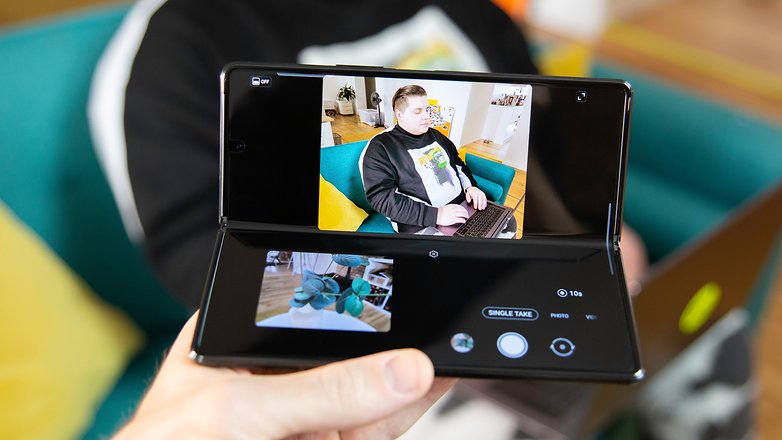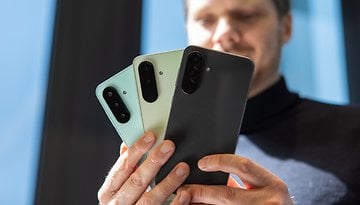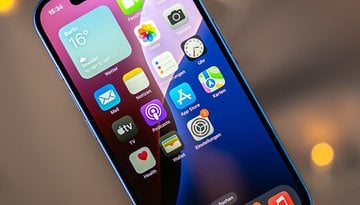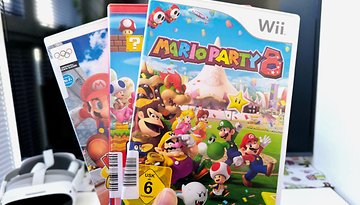Samsung Galaxy Z Fold 3 vs. Z Fold 2: Is it worth the upgrade?
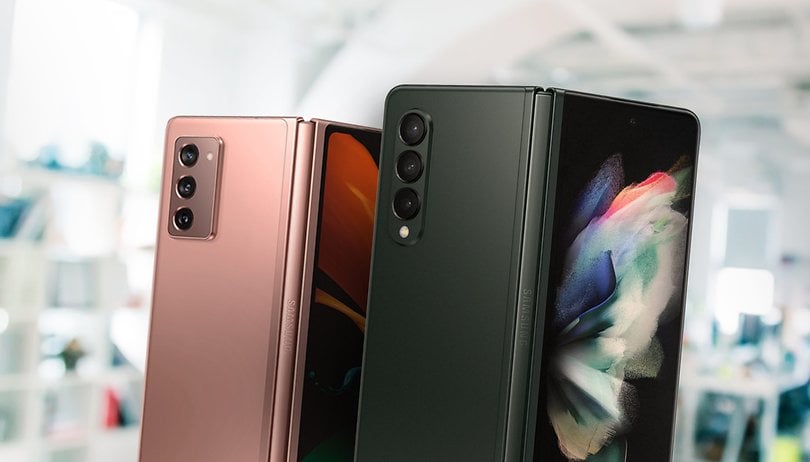

With the launch of Samsung's latest generation of foldables, we were pleasantly surprised to find considerable improvements in the Galaxy Z Fold 3 compared to the previous year's model. The screen has been reinforced with Gorilla Glass Victus. The smartphone is thinner while boasting superior protection against water with its IPX8 rating, support for the S Pen, and optimizations in the camera module and processor. Will a comparison of technical specifications between the Galaxy Z Fold 3 and Galaxy Z Fold 2 justify an upgrade?
Table of contents:
- Robustness and screen technology
- Camera configuration
- S Pen support
- Specifications compared
- Availability and price
- Conclusion: Is it worth the upgrade?
Robustness and screen technology
The new generation of the Z Fold series is more robust as Samsung introduced IPX8 certification which guarantees the device protection against water. This means the Z Fold 3 can be submerged in up to one and a half meters of freshwater for up to 30 minutes without suffering from any serious consequences. The same cannot be said of its predecessor, the Z Fold 2.
To achieve IPX8 certification was not an easy thing to do, especially since the folding mechanism requires each half of the device to remain connected via cables. Such cables need to have some degree of flexibility to allow the screen to fold and, at the same time, they need protection between their connections to prevent water from entering. Samsung's solution to this problem proved to be really elegant.
In an interview with The Verge, Samsung's engineers mentioned they chose to use a liquid that becomes solid when exposed to air to protect the wire connections in the circuit board, and this happens at the time of assembly of the smartphone. This way, the cables and their input are sealed, thus offering water resistance without compromising the folding mechanism.
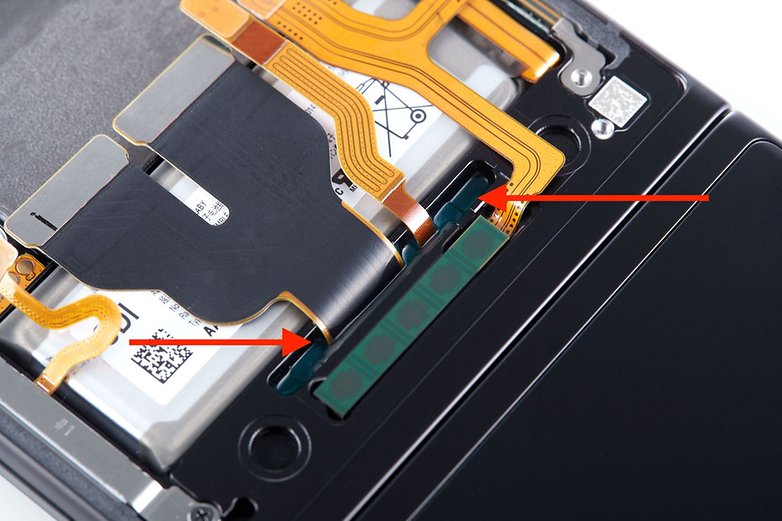
What was a wee bit easier to achieve though, was sealing the other parts of the device such as the hole for the front camera which uses a double-sided tape for protection.

In addition to water resistance, the Z Fold 3 also has protection against the dust entering. However, this protection did not receive any certification, so the Z Fold 3 comes with an "X" instead of "6" in IPX8 rating.
According to explanations by Samsung engineers, there was one way to keep dust out of the folding mechanism by improving the sweeper technology (the brush used in the previous generation) and adding nylon bristles that measure less than a millimeter wide on the covers. This technology already existed in previous models, but was improved in this new generation.
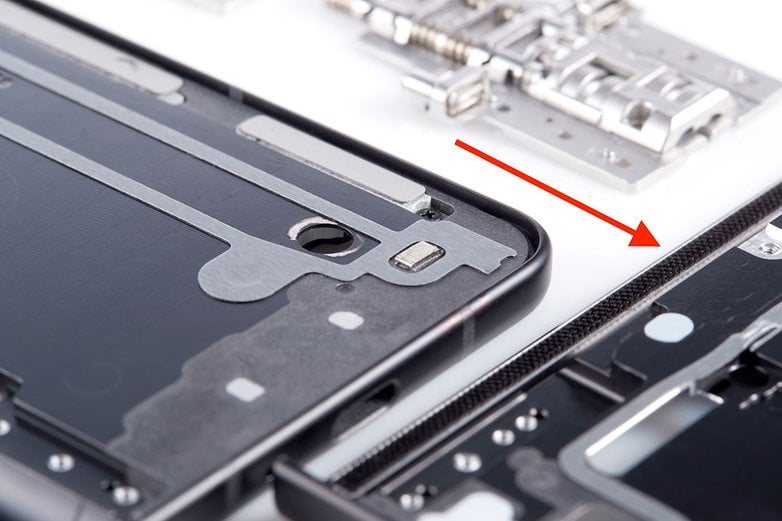
Still on the subject of the Galaxy Z Fold 3's strength, tests with the hinge that were verified by Bureau Veritas, showed that the lubrication of the device's folding mechanism can withstand up to 200,000 times of the folding motion without any issues. In practice, that means the Z Fold 3's hinges can last up to 5.5 years of opening and closing at an average of 100 times a day. I believe that the opening and closing frequency for the first few weeks of ownership would be higher before the novelty wears off.
Samsung also used a new aluminum alloy developed by itself known as Armor Aluminium, where they claim it to be 10% stronger than the one we saw in the Galaxy Z Fold 2.
Finally, the new generation's display has undergone considerable optimization over the previous model, increasing the level of durability and along the way, optimized power consumption.
The latest model's display now sports a layer that holds the Wacom Digitizer with S Pen support, another one for the OLED screen, and another one for the Ultra Thin Glass, a polymer protective layer. And last but not least, there's the new "stretchable PET" (Polyethylene terephthalate) protective layer that has been carefully positioned on the surface. This stretchable PET is touted by Samsung to be 80% stronger than the Z Fold 2's. In addition, we have Gorilla Glass Victus that provides additional protection against drops and knocks.

When it comes to robustness and screen technology, the Galaxy Z Fold 3 is significantly superior to the Galaxy Z Fold 2. The quality of materials is higher, we saw significant development of the folding mechanism and screen construction, as well as optimization against dust ingress and water resistance certification.
Of course, all this has also made repairing the foldable device more complex. So even if you have an extended warranty from Samsung, repairing your smartphone after the warranty has expired can be a headache and expensive affair.
Camera configuration
The Galaxy Z Fold 3 has a set of three rear cameras of 12 MP each: wide-angle (f/1.8), ultra-wide-angle (f/2.4), and a telephoto (f/2.4) lens with optical image stabilization (OIS). In front, we have a 10 MP camera and on the main screen, that is, with the device open, and a 4 MP sensor below the display that is specially dedicated for video conferencing.
As avid fans can tell, the Galaxy Z Fold 2 does not differ much when it comes to cameras, as the predecessor also came with a set of three cameras of 12 MP each: wide-angle (f/1.8), ultra wide-angle (f/2.2), and a telephoto (f/2.4) lens with digital image stabilization (EIS). As for the Z Fold 2's front cameras, we have the same 10 MP (f/2.2) sensor on the front display.
In 2020, our main criticism concerning the second generation of Samsung's foldable devices mainly covered the camera module. According to the review by my colleague Antoine Engels, who tested the model last year, "the Galaxy Z Fold 2 is Samsung's flagship par excellence, but it's shy when it comes to photography for an ultra-high-end device. We don't have any 64- or 108-megapixel sensors."
So on paper, the triple camera module of the second and third-generation Fold series look very similar to each other apart from the image stabilization of the telephoto lens and, of course, the front-facing camera on the main screen. In this sense, the main highlight would be the construction of the front camera notch found on the Z Fold 3 which can now be hidden under a relatively small number of pixels as observed in the image below:
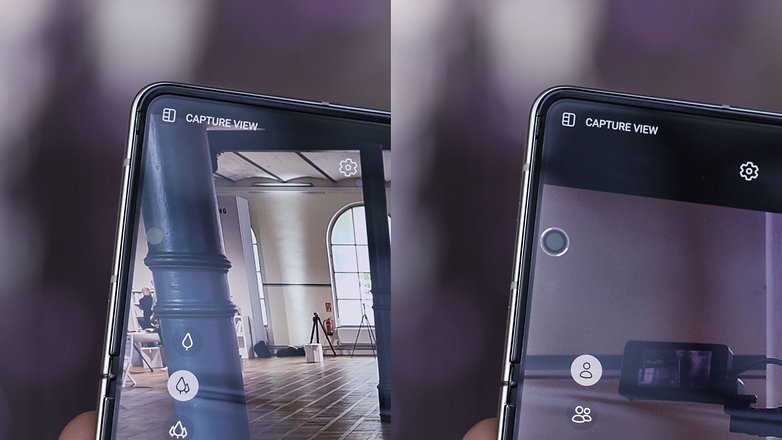
Without properly reviewing the Galaxy Z Fold 3, we can only rely on what we see listed in the camera specifications of one model and the other. Overall, the Z Fold 2's camera module didn't perform badly in our 2020 review, however, it also didn't reach the level of excellence expected from a premium flagship. Thus, it is quite likely that the Galaxy S21 Ultra will remain Samsung's smartphone with the best camera this year.
S Pen support
If we had no surprises regarding the camera configuration, those who bought the Galaxy Z Fold 2 in 2020 can certainly get excited about getting an upgrade because of S Pen support in 2021.
For the very first time in the Galaxy Z series, the foldable smartphone and S Pen stylus can be used together. With this, it is now possible to have S Pen features optimized for the foldable screen, thus increasing the multitasking potential that is offered by the large screen. Apps that support dual-screens can now deliver a more immersive experience with the foldable screen and the stylus.

To that end, Samsung has developed two options: the S Pen Fold Edition and the S Pen Pro. Both models have a retractable tip that limits the force exerted on the main screen of the Z Fold 3 which is a good thing as it avoids any possible damage. According to Samsung, the latency is even lower, which makes the writing and drawing experience more realistic.
The use of the S Pen is limited to the main screen of the Z Fold 3 and because it is an exclusive feature, there is nothing to reference it to in its preceding models.
Specifications compared
The Galaxy Z Fold line did receive a number of improvements, make no mistake about it. However, Samsung has retained much of what we saw in its predecessor in the third generation. The proof of this claim lies in the technical specifications compared below.
Two relevant highlights regarding the internal components of these two devices are the change of processor, where the Z Fold 3 receives a significant upgrade. However, the Z Fold 2 has a slightly higher battery capacity. Here, check out the technical specifications of each device by yourself to make the choice between the Galaxy Z Fold 3 and Galaxy Z Fold 2:
Samsung Galaxy Galaxy Z Fold 3 vs. Galaxy Z Fold 2
| Model | Samsung Galaxy Z Fold 3 5G | Samsung Galaxy Z Fold 2 5G |
|---|---|---|
| Processor | Snapdragon 888 | Snapdragon 865 |
| Memory (RAM / internal) | 12 GB / 256 GB 12 GB / 512 GB |
|
| Expandable memory | No | |
| Dual SIM | Yes (SIM1 + SIM2 or SIM1 + eSIM) | Nano-SIM and/or eSIM |
| Display | Main display: 7.6-inch, Dynamic Display AMOLED, QXGA+ (2,208 x 1,768 pixels), 120 Hertz refresh rate Front display: 6.2-inch, 24.5:9, Dynamic AMOLED display (2,268 x 832 pixels) 120 hertz refresh rate |
Main display: 7.6-inch, Dynamic AMOLED 2X, QXGA+ (2,208 x 1,768 pixels), 120 Hertz refresh rate Front display: 6.23-inch, 25:9, Super AMOLED (2,260 x 816 pixels) |
| Protection | Corning Gorilla Glass Victus | IPX8 | Corning Gorilla Glass Victus |
| Size | Closed: 158.2 x 67.1 x 16 millimeters Open: 158.2 x 128.1 x 6.4 millimeters |
Closed: 159.2 x 68 x 13.8-16.8 millimeters Open: 159.2 x 128.2 x 6.9 millimeters |
| Weight | 271 grams | 282 grams |
| Connectivity | 5G, LTE, WLAN 802.11 a/b/g, Wi-Fi 6, Bluetooth, USB Type-C, GPS | 5G, LTE, WLAN 802.11 a/b/g, Wi-Fi 6, Bluetooth 5, USB Type-C, GPS |
| Main camera | 12 megapixel at 1/1.76", f/1.8 aperture | |
| Ultra-wide-angle | 12-megapixel at 1/3.24", f/2.2 aperture | |
| Telephoto camera | 12 megapixels at 1/3.6", f/2.4 aperture | |
| Front-facing camera 1 | 10 megapixels at 1/3.1", with f/2.2 aperture | 10 megapixel at 1/3", with f/2.2 aperture |
| Front camera 2 (internal) | 4 megapixels at 1/3.1", with f/1.8 aperture (wide angle) | 10 megapixels at 1/3", with f/2.2 aperture |
| Battery capacity | 4,400 mAh | 4,500 mAh |
| Charging technologies | 20 Watts fast charge, 10 Watts wireless charge | 25 Watt fast charge, 10 Watt wireless charging |
| S Pen support | Yes, Fold Edition and Pro Edition | No |
| Audio | Stereo speakers, Dolby Atmos, Music Share | Stereo speakers |
| Operating System | Android 11 | Android 11 (current) |
| Price | $1,799 / $1,899 | $1,799 / $1,999 |
| Launch | From August 27, 2021 | August 2020 |
Availability and pricing
Samsung has a dedicated page for those who are interested in the device.
In the global market, the Z Fold 3 has been available since August 27 at a recommended retail price of $1,799. Meanwhile, the Galaxy Z Fold 2 saw a price drop earlier this year with a similar price point of $1,799.
Conclusion: Is it worth the upgrade?
Despite considering how the only improvements from one generation to the other are marginal based on hardware specifications alone, I would say that upgrading from the Z Fold 2 to Z Fold 3 is still justified: you get a more robust build and display, IPX8 certification, S Pen support and optimizations in the camera module alongside a more powerful processor.
If you're thinking of migrating to the Galaxy Z series, the best option right now would be the Z Fold 3 not only for the extras that the new foldable device brings, but also because Samsung is also offering a pretty interesting promotion to exchange your current device for the new Fold 3 in selected countries.
Investing in the Galaxy Z Fold 2 would be worth it only if the price was considerably marked down which should not happen so soon given that Samsung's focus is to boost sales of the third generation of the Galaxy Z series.
